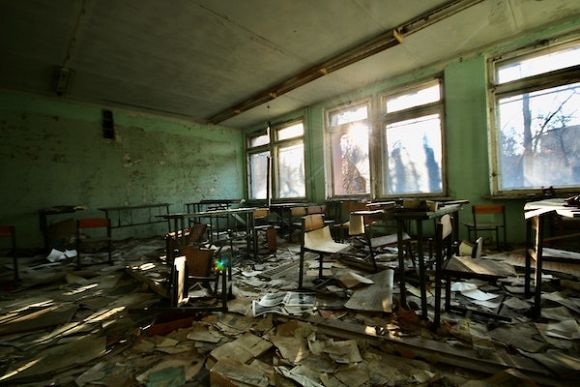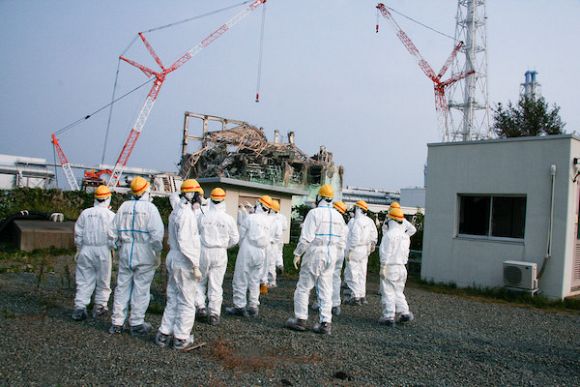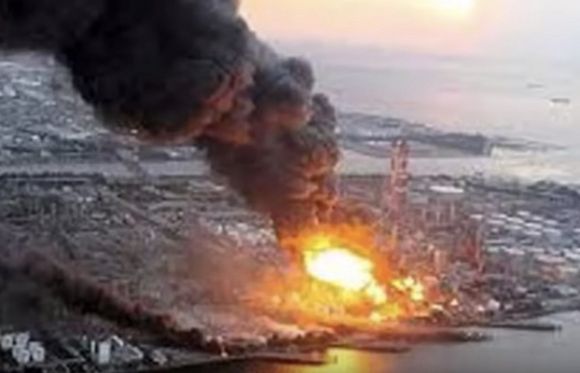
How Australian uranium ended up in war-torn Ukraine
By Dave Sweeney | 28 February 2022, 3:00pm | 4 comments |
IN 1986, a catastrophic meltdown at the Chernobyl reactor turned the global spotlight on nuclear power and Ukraine’s nuclear industry.
Former Soviet President Mikhail Gorbachev said Chernobyl hastened the collapse of the Soviet Union. The human, environmental and economic costs of the meltdown were massive, and continue today — as does Chernobyl’s place in the global media gaze.
Apart from the reactors at the Chernobyl complex – including the concrete sarcophagus encased reactor four – the site is home to more than two hundred tonnes of plutonium, spent nuclear fuel and high-level radioactive waste.

If the complex cooling and containment measures are breached, broken or abandoned, there is a very real chance of an uncontrolled radiation release that, according to Ukraine Interior Minister Anton Herashenko, could scatter poison over Ukraine, Belarus and the EU.
In the shadow of the Chernobyl disaster and a sustained record of poor performance and governance at Ukraine’s 15 other ageing reactors, one might think a proposal in the latter half of the last decade to supply Australian uranium to Ukraine would not get off the ground.
Yet such a plan was proposed and advanced by the Federal Government only five years ago.
Environmentalists and independent security analysts raised concerns about the risks inherent in the proposal and cautioned Australia – the nation that fuelled Fukushima – not to sell uranium to the country that gave the world Chernobyl.
JSCOT did eventually sign off on the uranium deal, but this was no green light for yellowcake.
As is the norm with international treaty arrangements, the sales plan was considered by the Federal Parliament’s Joint Standing Committee on Treaties (JSCOT).
JSCOT conceded that existing safeguards were ‘not sufficient’ and there was a risk Australian nuclear material would disappear off the radar in Ukraine.

HELEN CALDICOTT: Small modular reactors — same nuclear disasters
Its approval was conditional and required that:
‘...the Australian Government undertakes a proper assessment of risks and develops and maintains a suitable contingency plan for the removal of Australian nuclear material if the material is at risk of a loss of regulatory control.’
There has been no subsequent detail provided by the Government on the status of this modest and prudent check and balance.
Less than a year ago, in April 2021, the first Australian uranium made its way to Ukraine.
The Australian Nuclear Safeguards and Non-Proliferation Office (ASNO) is a unit within the Department of Foreign Affairs and Trade that is charged with ensuring Australia’s nuclear trade, at least on paper, complies with global nuclear security commitments and safety standards.
In its 2020-2021 annual report, ASNO referenced the Ukraine deal and the bland language failed to cover some disturbing trends and omissions.
In April 2021, ASNO facilitated the first transfer of AONM (note: Australian uranium is formally referred to as Australian Obligated Nuclear Material or AONM), within fuel elements manufactured in Sweden, to Ukraine.
2021 will see the commencement of bilateral annual reporting between Australia and Ukraine, following the first transfer of AONM to Ukraine in April 2021. The Australia-Ukraine Nuclear Cooperation Agreement entered into force in June 2017
The IAEA has continued to draw soundly based safeguards conclusions for States with safeguards agreements. In 2020, Libya regained the broader conclusion (lost in 2019) through the implementation of safeguards activities there. Ukraine lost its broader conclusion as circumstances there prevented the IAEA from verifying certain nuclear materials in Crimea.
Notwithstanding the loss of the broader conclusion, on the basis of the IAEA’s evaluation of all safeguards relevant information available, the IAEA did not find indications that would give rise to proliferation concern.
(Note: “Broader conclusion” means an IAEA conclusion – sometimes based on highly constrained or limited data – that all nuclear material remained in peaceful activities.)
Even before this week’s dramatic escalation, the chain of the world’s primary nuclear “watchdog” did not stretch as far as Ukraine. Now the situation is far worse. We have scant knowledge or effective control of Australian-origin uranium.
This material is there now and is presumably fuelling some of Ukraine’s 15 ageing and underperforming nuclear reactors, two-thirds of which have now reached or exceeded their design life use-by date.

Fukushima, the 'nuclear renaissance' and the Morrison Government
Ukraine’s wider nuclear sector is plagued by serious and unresolved safety, security and governance issues and some reactors have previously been the focus of armed assaults from separatists.
Uranium is a dual-use material that can be used for civil power production or diverted for far less civil purposes. The inherent risks and the connections between nuclear technology and security threats have again been put into sharp and deeply disturbing relief in Ukraine.
As a supplier of a fuel that has unique properties and risks, Australia has a minimum responsibility to make sure this occurs in a transparent and responsible way.
This is not the situation in Ukraine.
In developing a coordinated national response to the growing war-fighting the Australian Government should urgently revisit, review and act on JSCOT’s call.
To do less runs the real risk of Australian uranium fuelling uncertainty and radioactive risk.
Dave Sweeney is the Australian Conservation Foundation's nuclear-free campaigner and was a founding member of ICAN. You can follow him on Twitter @nukedavesweeney.
No comments:
Post a Comment